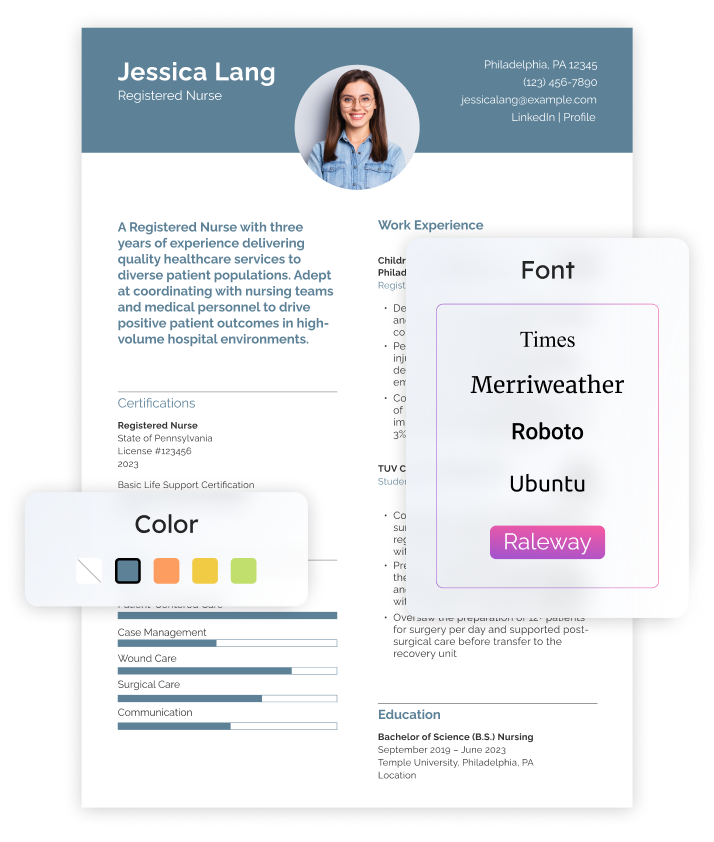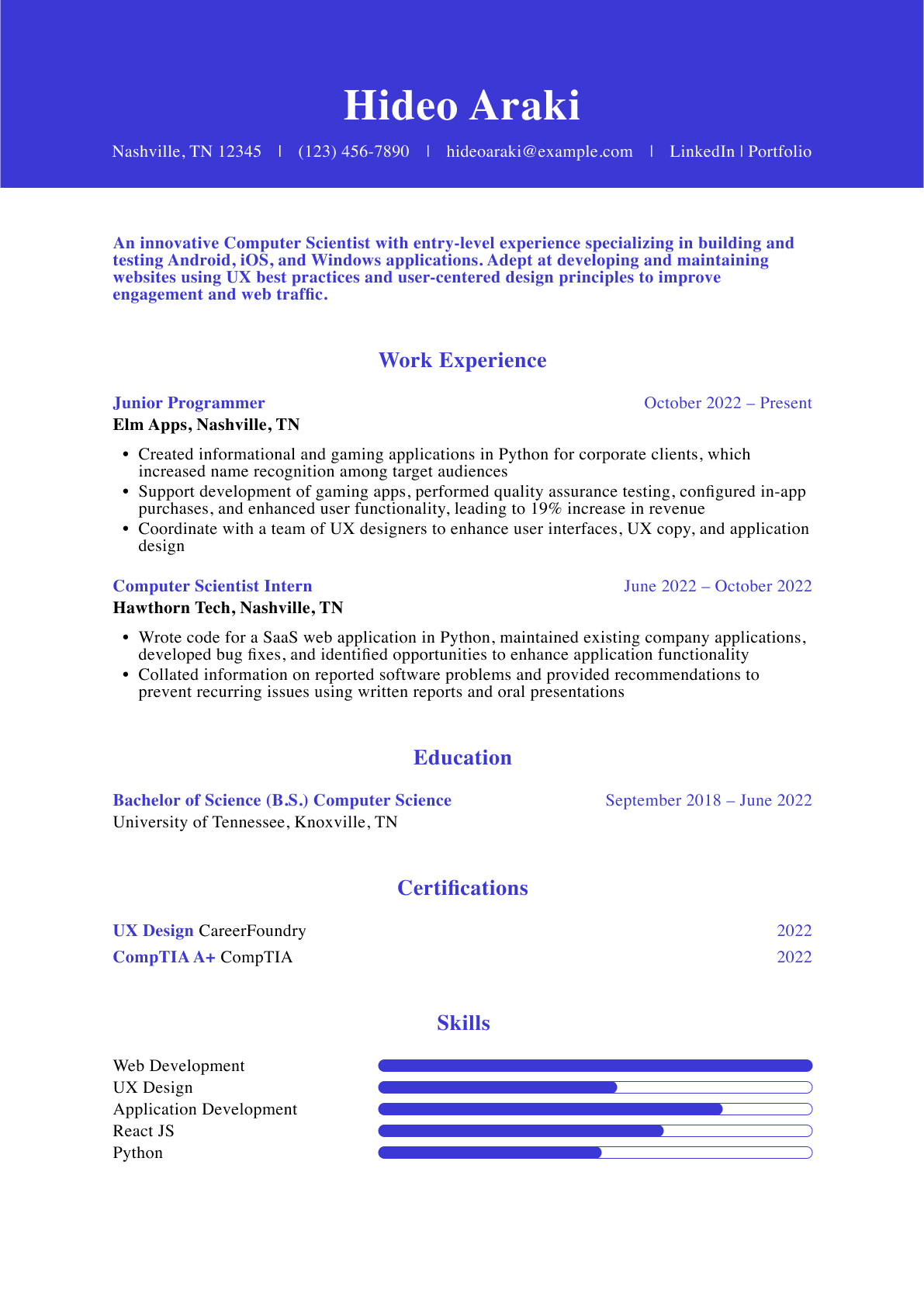You can make problem-solving a key theme of your resume and cover letter by giving concrete examples from your background. The following guide will show you how.
Problem-Solving on Your Resume
To develop strong examples of problem-solving on your resume, follow these steps:
To develop strong examples of problem-solving on your resume, follow these steps:
Step 1: Brainstorm past problems
For each relevant job in your work history, brainstorm the general business problems you’ve solved or alleviated. These may include:
- Cost increases
- Employee skill or knowledge gaps
- External audit findings
- High staff turnover
- Low employee morale
- New regulations
- Poor customer relations
- Process inefficiencies
Step 2: Pinpoint your actions
Now identify your core actions concerning those problems. The following verbs list can help you explore and determine how you’ve tackled past challenges. Notice how each verb indicates some problem or issue that hindered (or threatened to hinder) business performance, as opposed to more neutral/positive resume verbs like “Created,” “Enhanced,” or “Introduced.”
- Addressed
- Avoided
- Cut
- Decreased
- Eliminated
- Fixed
- Halted
- Isolated
- Lowered
- Mitigated
- Overcame
- Pared back
- Prevented
- Reduced
- Removed
- Resolved
- Restored
- Revitalized
- Stopped
- Troubleshot
- Turned around
Step 3: Explain measures you took
Having identified past problems and your core actions in response to them, try to be more specific. How did you solve or alleviate the problem? Describe the strategies or projects you developed. For instance, did you address skill gaps by devising a new training program? Or fix service issues by introducing a better way to engage with customers? If so, what did that new service approach entail?
After completing these steps, you should have the basis for one or more strong examples of problem-solving on your resume, such as:
- Developed a new training program that resolved critical gaps in the sales team’s product knowledge
- Restored positive relationship with a major client by paying regular in-person visits to demonstrate new product features and address any concerns
Step 4: Quantify your results
If possible, quantify the example with hard numbers. Show how your problem-solving made a tangible impact on $ revenue, % growth, or other business metrics. For example:
- Restored positive relationship with a major client by paying regular in-person visits to demonstrate new product features and address any concerns. Efforts prevented loss of a $500,000 account
Detailed bullet points like this one are the cornerstone of a great resume. Giving concrete examples of your problem-solving talents shows hiring managers you’re ready to tackle similar challenges at their organization.
(Optional) Step 5: Use the Problem, Action, Result method
You can further develop the example using the Problem, Action, Result (PAR) approach. This approach is a slight variation of the STAR interview method. With the PAR method, you write out one or more distinct lines to describe:
- The particular problem you encountered
- The action you took to solve the problem
- The positive result your solution produced
Example:
Problem: A top client struggled to integrate the company’s latest product with its systems, leading to miscommunications and frustration with the support team.
Action: Quickly revised work schedule to focus on mending the relationship. Paid weekly in-person visits to client offices to demonstrate new product features and address any concerns.
Result: Restored positive relations and productive partnership with the client, preventing loss of a $500,000 account.
The PAR method is a great way to highlight your top achievements. However, remember that this structure takes up much more space than a regular bullet point and can be a bit ponderous if you overuse it. To keep your resume manageable, consider using PAR for just your top three achievements from your career so far.
Problem-Solving on Your Cover Letter
The four-step process above lets you feature problem-solving on your cover letter, as long as you’ve structured your letter to include bullet highlights. Copy over the examples you’d like to include in this document. Since the bullet points will appear on your letter out of context, cite the associated job and company in brackets at the end of the line. For example:
- Developed a new training program that resolved critical gaps in the sales team’s product knowledge [Sales Director, ESS Corp.]
Don’t worry about repeating these resume points on your cover letter. A little repetition across job search documents doesn’t undermine your application and can make it easier for the hiring manager to register your top selling points from your experience. Take care not to repeat more than a few sentences or bullet points. Keep the overall focus of your cover letter on why the job and company at hand appeal to you.
Side Note
You can also emphasize problem-solving in the introductory sections of your resume. Consider these four options:
- Incorporate one of your problem-solving examples in your Profile description. Add a sentence that starts with “Achievements include…” or “Recent achievements include…” and then plug in whatever highlight you’d like to showcase.
- Add a line to your Profile stating your general skill at problem-solving. For example:
Focused on isolating key business problems and finding creative yet practical solutions.
Also, in your Profile section, include the adjective “Resourceful” or “Solution-focused” ahead of your professional title. For example:
Resourceful Sales Director with 10+ years of advancement and achievement.
In your Key Skills section, add one or more of these terms as they relate to your background:
- Complex problem-solving
- Cost reduction and elimination
- Operational turnarounds
- Risk management and mitigation
- Technical troubleshooting
Craft your perfect resume in minutes
Get 2x more interviews with Resume Builder. Access Pro Plan features for a limited time!
Frequently Asked Questions About Problem-Solving Skills on Your Resume and Cover Letter
What are some key points when addressing problem-solving skills?-
When mentioning your solution-oriented skills, emphasize your related capabilities, offer specific examples, tailor your words to the job description, and quantify results when possible.
What are some common questions about problem-solving skills?+
Some typical questions may include:
- Describe a situation where you had to present a solution to senior management.
- How do you handle unexpected obstacles when solving a problem?
- How do you prioritize different issues when facing multiple challenges?
- What steps do you take to ensure you fully understand the root cause of a problem before solving it?
- Have you ever had to overcome resistance to change when implementing a solution to a problem?
How do you describe problem-solving skills in a cover letter?+
Focus on problem-solving skills by describing specific challenges you faced and any solutions you came up with. As much as possible, use quantifiable achievements, such as “Resolved a workflow issue that improved team productivity by 40%.'' Make sure each example is relevant to the job you're applying for.



